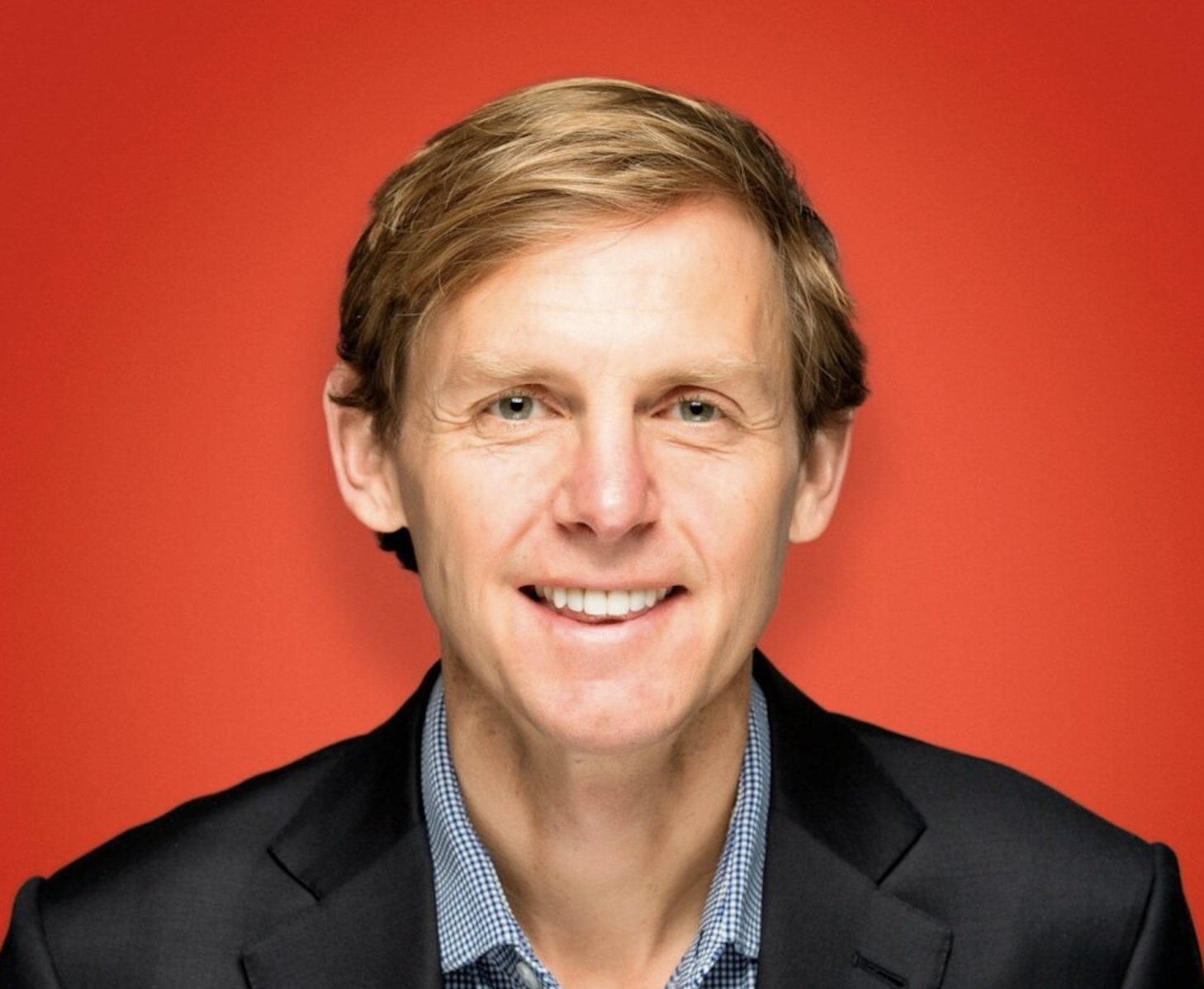Today’s changing market environment has created volatility for early-stage startups, their founders, and their employees. For young software startups, finding product market fit, signing enterprise clients, and growing a company is hard enough without having to deal with tighter budgets and capital markets.
Jake Stein’s experience as a serial tech entrepreneur makes him the perfect person for us to speak with, regarding the ups and downs of navigating life as an early-stage founder through different market environments. Jake Stein is the founder and CEO of Common Paper, his 3rd start-up, prior to which he co-founded and exited two software companies over the last decade – RJMetrics and Stitch, which he sold to Magento (acquired by Adobe) and Talend, respectively.
Crew Capital’s Brandon Deer recently sat down with Jake Stein to discuss life at early-stage companies, finding product market fit, scaling to thousands of customers, product pivots, building Common Paper, selling companies, what motivates him to continue to start companies, and much more.
Interview
Jake, it is a pleasure to have you with us. Let’s jump right in, tell us a bit about the first two companies you started, and how you got into the startup world in the first place.
The genesis of my first company, RJMetrics, came while I was working at Insight Venture Partners two years after I graduated college.
A big part of my job there was to do due diligence on new investments, which were often later-stage start-ups. This meant really in-depth data analysis such as cohort analysis, customer lifetime value analysis, churn rates, etc. We were crunching huge amounts of data gathered from different databases in Excel, Access, SQL, etc. We would do this as part of our investment analysis, and then when we actually ended up investing in a company, we would go back to the management team and show them their metrics. We’d explain to them, here are the various metrics we look at within your business, and here is how we think about them and how we think about your company.
We were pleasantly surprised by the fact that many founders within great companies, with lots of experience, were blown away by the granularity of metrics we were showing them. They had never seen their businesses that way. They would then come to us over time and ask for us to cut the data again, and refresh various charts we had shown them during our due diligence.
My co-founder Bob, came up with the idea of creating a software tool that would replace and automate the manual work we were doing to collect and display these metrics.
From there, RJMetrics was born, and the initial use case we targeted was around general analytics for startups. We eventually focused on eCommerce. After 8 years of running the company, we sold it to Magento Commerce, which was our biggest partner. The product still lives today as Magento’s analytics product, Magento BI, even after Magento was acquired by Adobe.
That’s awesome. What year was that when you guys founded it?
We started it in 2008 and sold to Magento in 2016.
So that was before software had become so “metric-ified” if you will. Today, investors and founders know every metric that matters for every category of tech, plus lists of benchmarks for what is considered good or bad. You guys nailed the timing, right at the beginning of the metrics trend, not to mention the growth of eCommerce and data analytics software more broadly. What about your second company, Stitch?
Exactly, yes. So Stitch came out of some of the trends we were seeing while we were building RJMetrics. As you were saying, a big thing going on in the market was the changing nature of the infrastructure used to collect and analyze data. At the time, cloud-based data warehouses had started to take off. Amazon Redshift, Snowflake, Google BigQuery, Azure SQL Data Warehouse, etc.
We observed that some of our smartest, most sophisticated customers from a data infrastructure perspective began to churn. When we saw what they were doing, it was the early iteration of what would eventually become known as the modern data stack.
At RJMetrics, we were offering a totally integrated package. We were able to replicate and transform the data, we managed a data warehouse for the client, and we built a proprietary visualization layer on top of it. Since we controlled all the pieces, there was fast time to value. The downside of it was that it wasn’t very composable.
As the clients’ data teams grew, they wanted to be able to swap out different tools, attach them, and compose them. That, together with the rise of the cloud data warehouses, is what led these really forward-looking companies to say they don’t need this integrated stack anymore, they just wanted the data pieces. For a long time, we tried to convince them that is not the right way to go. Eventually, we realized that actually, this was where the market was going.
Then we did an experiment. We added a new feature where we would also send data to the customers’ data warehouse, which was sort of an upsell for a while. It was working. We did other experiments on it, and after we closed one of our biggest deals by removing three pieces of our functionality, that was the validation we looked for to spin it out into a totally separate product.
Initially, we called it RJMetrics Pipeline. We soon saw there was this tension between two different products in the same company. When we sold the original RJMetrics business, we spun the new product out of the company and called it Stitch. 3 years later we sold it to Talend.
You were two for two in the trends that you picked to build your companies on – the growing importance of metrics and e-Commerce, and the rise of cloud-based data infrastructure and the modern data stack. What an experience – you mentioned you were really young when you first started RJMetrics, how do you think your role as a CEO and founder has changed over the years?
My role definitely has varied a lot depending on the stage the companies were in. In the early days of RJMetrics, when it was just Bob and me, my main focus was on customers. He was dealing with everything product related. He was writing the code and building the product, while I was selling, onboarding, and supporting the customers.
Later on, there were times when I was only managing people or managing executives. There are very different skill sets required for it. In a lot of areas, I wasn’t doing a great job. I don’t think I was a particularly good leader when I first started managing people. I had some role models, so I could say I grew my skills as the company grew, and I learned. I started focusing more on hiring the right people, making sure we are aligned, figuring out the right strategy, building the system more, and leaving the tactical aspects to my team.
I went from very tactical and hands-on to more strategic in my involvement as a CEO. At Common Paper I am back to doing a lot of individual contributor work and managing a few team members as we continue to build our platform as an early-stage company.
So you’ve told us a lot about RJMetrics and Stitch. Tell us about your latest company, Common Paper, which full disclosure we are investors in here at Crew. Tell us about the product and how you came to found the company – based off the stories you told us so far, I’m guessing there was a problem you saw at your last company that you wanted to go solve?
For sure, Common Paper is another instance of seeing a problem and creating a company to try to solve it. At both RJMetrics and Stich, moving prospects through the contract negotiation and signing process was always a lengthy and time-consuming process – on both ends, for us as well as our customers.
When you think about the beginning of a relationship between a vendor and a customer, it should be a happy time. The customer has a problem, the vendor has a solution, and there’s some amount of shared vision.
Unfortunately, too often those relationships start with arguing over contract templates – whose agreements to use? It can be a crazy process of back and forth, attaching files, involving different people, and sometimes losing track of which version is the current one. Most of the time there are delays, and sometimes companies miss quarterly targets because a deal they expected to close ended up getting stuck in legal.
Then finally when a company closes the deal, they have to fulfill all that was decided in the contracts. This is not that big of a problem when it’s your first customer, since you know exactly what you agreed to. But if you have thousands of customers, it becomes really challenging to keep track of what are the agreements you have in place with all of them. People think of the vendor-customer relationship as simple – the vendor promises to deliver their product to the customer, and the customer promises to pay the vendor – but in reality, there are many ancillary terms that are part of a contract.
For example, there was a time at RJMetrics when we wanted to refresh our website and add more customer references. How were we to know which customers we could feature on our website? We had to literally go and read over 200 PDFs to see which of the companies said yes to us featuring their logo. There is a ton of incredibly valuable business data inside those contracts that is buried because it’s totally unstructured and inconsistent.
At Common Paper, the core of the problem we’re trying to solve is increasing the speed and reducing the friction involved with contract negotiation.
Many of us know the pain you’re talking about in dealing with getting the legal minutiae agreed upon in a tough contract negotiation. It’s an awesome vision, and a solution that is sorely needed in the industry. So bring us up to speed to today. What does the product look like, and what’s your vision of what it will come to look like?
We think of contracts as actually being interfaces between companies. The right model for the interface should not be a big blob of unstructured text. These interfaces contain data and prescribe actions similar to APIs between software applications. Looking at the big picture, contracts should be like APIs, and Common Paper’s way of making that vision a reality consists of two tracks.
One track is the standardization of the contracts themselves. We are a relatively small team – 9 people, as the company is still an early-stage business. But we work with a committee of about 35 attorneys that are from some of the largest tech companies in the world like Meta and Salesforce, as well as well-known law firms like Goodwin Procter, and boutique law firms with highly specialized attorneys, who share with us their different subject matter experts’ perspectives. With this committee, we created a series of “Common Paper Agreements” that are free to use and modify under the Creative Commons license. These are open-source, standard contracts for things like mutual nondisclosure agreements (NDAs), design partner agreements, data privacy agreements for European privacy law, and cloud service agreements.
We offer all of the agreements as free, open-source, downloadable documents. The second track and important piece of the Common Paper platform is a single software to manage and store contracts. The key differentiator from other contract management software is that Common Paper operates at the level of the structured data that’s built into the document. So when you’re managing your contracts, you’re keeping track of what gets negotiated, in a programmatically accessible application. Signatures, permissions and approvals, and all terms in the contract are all stored and are easily accessed so you can instantly know the terms of your contracts. We then have a paid tier to help with the full contract agreement workflow, and for every contract, we offer up to 5 free completed agreements per month. We are continuously improving and adding new features.
As an example, we just launched the Design Partner Agreement which enables startups to structure design partnerships with early customers. The agreement leverages industry standard terms and IP protections. We worked closely with early stage investors, operators, and founders, in addition to our regular legal committee, to ensure we created the best standard version possible.
So the first piece is basically creating all of these open and standard agreements for common contracts that companies deal with. Common Paper is doing for these different agreements what Y-Combinator did for convertible notes with their SAFE agreement. That’s great, and I really like the idea of the structured and programmable data component of it that gives you access to all the previously inaccessible data stored in contracts. How do you think about positioning the value proposition to potential customers, and how do the open-source agreements play into that?
So we have some great companies using our agreements like Figma, Crossbeam, Guru, and Dagster. And the agreements have been downloaded thousands of times.
It is a lot about speed and risk reduction. It accelerates sales cycles, which is crucial for both sides – the vendor and the customer, and it reduces the risk for both. Over time, as this “API for contracts” vision becomes a reality, the additional advantage, is making all the data inside contracts programmatically accessible both on read and write. Today it’s so hard to extract the data that most companies don’t even try.
For example, when we were in the very early days of Common Paper, we interviewed over 100 companies about their contract process, what they use, how they do it, and what are the timelines. I asked almost all of them if they have insurance to cover the liabilities represented in their contracts. Everybody said, of course. When I asked how they pull the data from that into contracts and match that to how much insurance they have, none of the companies had a real solution for it.
So in this example, Common Paper could facilitate companies doing a much better job of matching their actual liabilities to the insurance they need, or help them make the case to future investors about the strength of their recurring revenue base, or all these other things that come to the surface once you have actual data and access to all the contracts. But there is still work to do until we fully make that a reality.
It’s a seriously compelling vision and a lot of startups and larger businesses will benefit from the platform as you build it. So going back to your previous companies, you exited two businesses in the previous decade. The post-financial crisis era, the mid-2010s, was one of the strongest bull markets in history, particularly for tech. It was a decade of low rates, easy money, and there were a lot of great startups being founded. But it paled in comparison to the headiness that we saw in the post-COVID 2020/2021 market environment. For the foreseeable future, we’ll probably be in a market environment that looked more like the mid-2010s than the last few years. Since you built and sold two successful companies during that time, what is some advice for new founders who have only known the post-COVID market environment in the last couple of years?
I’ve had fundraising processes where I completely failed after I worked for months and ended up with zero capital raised. I also had fundraising processes in which I couldn’t believe how much negotiating leverage I had, and I received multiple term sheets without doing much work.
It’s hard not to feel really down in the first case, or like you’re the smartest person in the world in the other. In reality, you are the same person, so try not to let the fundraising environment dictate your mental health and sense of self-worth, though it can be really hard.
The flip side of it is that sometimes, the reason that investors are excited about one thing, and not excited about another is good – it can help you. Try to be intellectually honest about the signals you’re getting from investors since they are smart people who see a lot of companies and have a different perspective.
But also, don’t take the acceptance or rejection from investors too personally. Try to keep perspective and focus on the underlying economics in the business you’re building, because that is what really matters. If you’re solving customer problems, the signal that will confirm that is the response from your customers. It doesn’t really matter how good you are at fundraising. Ultimately if you don’t provide value to your customers the business won’t work out.
On that topic of getting real signals from customers vs. signals from investors, we saw a lot of companies raising a lot of money in the last couple of years with a questionable degree of product market fit. In your view, what is product-market fit, how do you define it, and how should founders think about it?
To me, there is a degree to which product-market fit is like the quote about obscenity from Supreme Court Justice Potter Stewart, “I know it when I see it.”
But if I had to try to distill it, I would say product-market fit is defined by when customers, the market, begin to pull on the product, vs. when a company is pushing the product onto the market. It’s the pull vs. push question – if you are the one pushing your users onto your product, you probably don’t have a strong product-market fit, but if the users are pulling it from you, then you probably do.
There are a couple of metric frameworks around it, both quantitative and qualitative, like the survey question that Superhuman used to measure product-market fit – asking users how they’d feel if they could no longer use your product, and the ones who would feel very disappointed you can optimize around to help find product-market fit. When you have a small number of users, it’s more of a qualitative thing, once you have larger numbers, and lots of data points, using some of those more quantitative frameworks for product marketing can potentially become more useful.
What are some key mistakes you’ve either made or observed in companies trying to find product market fit?
I’ve made a lot of mistakes. Here are a couple from the early days of RJMetrics. We actually had lots of product market signals and initial success because we were early to that market, and had a pretty good product for that time.
The initial success led us to make two important mistakes. The first one was that we continued to think linearly about the business rather than on orders of magnitude. Early on, we did a good job of validating product-market fit by immediately trying to sell the product. Even before the product existed, I was on calls with potential users, trying to get them to commit to buying. Then once we got people to say yes, we built the feature set they wanted. The mentality was, now we have one customer, how do we get to two? How do we get to three, and then five, and so on.
I strongly believe that was the right way to validate product market fit. However, we should have stepped back after we had our first 20ish customers, and objectively thought through our strategy to get to 200, and from there on to 2000.
We had seen success with our initial strategy, and we just kept going in a straight line. If we would have taken a step back to evaluate, redo our strategy and roadmap, and then execute, that probably that would have made a big difference.
The other piece that never even occurred to me until years after it was true, was that you could lose product market fit. It’s not a binary thing, having it or not having it. I remember I talked about the RJMetrics story with some of our smartest customers starting to churn as a new wave of data infrastructure in the cloud was being created. When you start seeing conversion rates getting worse with time, really sophisticated customers churning out and choosing something else, you realize product market fit is a living, breathing thing that you have to nurture and pay attention to. That’s something that just wasn’t on my radar at all in the early days.
So you say you should have thought about growth and customer logo acquisition in terms of an order of magnitude, getting from 20 to 200 to 2000, rather than in a linear manner. What does that actually look like in practice? How does that manifest? What are the different actions you take when you’re thinking exponentially vs. linearly like that?
This is something I got meaningful advice early on and I didn’t understand its value until years later at Stitch. We had an independent board member, Chuck Dietrich, who was incredibly helpful, and we had multiple conversations with him about alignment, how important it is, and ways to get it.
For example, if we had stepped back and really evaluated the product we were building at RJMetrics, the go-to-market motion, and the pricing strategy, there were different things we could have improved to bring those into better alignment. There was a lot that was working, we had millions of dollars in ARR, and the product was really cool, but for the level of how high-touch the implementations were, we should have been charging more or we should have been charging the same amount and had a much more touchless onboarding. Depending on which marketing assets were successful, we should have targeted different user personas. We didn’t really ask ourselves the question of how are we going to build this as a well-oiled machine to deliver a particular level of outcome.
So it goes back to ensuring cross-functional alignment fits with the goal you’re working towards and sets the broader organization up in a way to achieve that broader goal.
At RJMetrics you ended up spinning out the Stich product, which makes me want to ask about how you think about product pivots in general. Obviously, you didn’t do a full pivot in that case, since you sold the core business, which was generating millions in ARR as you said. But if you’re a seed stage company, how do you think about executing a pivot while trying to find product market fit? How do you know when it makes sense to pivot the product you’ve set out to build, vs. to focus and be patient on the initial product?
Pivoting is a hard step for any founder. There is this famous story I read in one of Andy Grove’s books, Only The Paranoid Survive. Andy was the CEO of Intel, and he and Gordon Moore are going back and forth on how to deal with the commoditization of their core business, which at the time was memory chips. Andy and Gordon tried the following exercise: imagine the board fired us today, and they brought in a new CEO, what would the new CEO do?
That framing clarified the issue and they realized that a new leadership team would obviously, focus on microprocessors, and get out of the memory business. And that’s exactly what they decided to do, and the rest is history with Intel growing to dominate the microprocessor business.
I think this framework is a useful way to think about it and ask yourself questions like, if I was starting the company today, with everything I know now, what would I do? What am I really worried about someone else doing? It may not always be the case that it’s something different and that you should pivot, but I think it should raise a red flag if that’s your conclusion.
Whether it’s a pivot or a split, I don’t know if this is a general lesson, but I really think that trying to look at a potential product pivot situation with fresh eyes and the beginner’s mind, so to speak, can be valuable.
That story about Intel and Andy Grove’s decision to get out of memory is such a classic. I didn’t realize Grove talks about that, I’m going to have to go back and read it now.
You spoke a bit just now about thinking that it was right at the time to sell RJMetrics. Talk more about that, and what it was like when you decided to sell Stich too. When did you and the other cofounders realize it was time to sell? What were the conversations like at the time and the considerations you and the other cofounders had?
It’s a tricky thing to get it right, and you never know it in the end, because you don’t know the counterfactual – what would have happened if you had sold later or if you had tried to sell earlier.
Ultimately it’s something personal and subjective to your business. The strategic question I would ask is are you in a space that’s going to get commoditized? Are there headwinds or tailwinds that will make things worse or better for your business over the next 5, or 10 years? Of course, then there’s also the human aspect of it, do you want to do something else or are you tired? There are other ways to take a break other than selling your company, but that’s part of it.
All these things came up when we first decided to raise money for RJMetrics, because we had bootstrapped the company for the first three years. So we had to ask whether we wanted to be a venture-backed company, or whether we wanted to continue to be a bootstrapped company. It was a big decision to take. There were a lot of business justifications for that, but it also came down to how we want to spend the next ten years of our life.
Eventually, it is a mix of business, strategic, financial, and personal considerations.
We’ve talked a lot about the last few years. Let’s talk about the future – what keeps you going? You’re at your third company already, and being a founder is not an easy journey. What drives you to want to start from scratch for the third time now?
I feel incredibly lucky that I get to work with absolutely amazing people every day. Some of the peak experiences of my life have been with these coworkers who have become my friends, and whom I really trust, respect, and admire. To work on a hard problem with these people,. it is the greatest privilege I could imagine.. After selling Stitch, I spent some time at Talend, then took a sabbatical period. I felt myself being pulled towards working on something with a team of people I really cared about again, on this particular problem that became Common Paper.
So, yeah, starting a company can be incredibly frustrating, hard, and demoralizing at times, but, I wouldn’t trade it for anything.
Going a bit deeper here into some of what you said, being an entrepreneur can take a toll on your personal and family life. How do you achieve and maintain a balance between all of it?
It’s hard. I have struggled on and off with anxiety and insomnia, and it’s tough sometimes to balance being a good husband, friend, and coworker. It’s also a source of resilience and pride. The fact that my work is meaningful to me is a net positive for my mental health, even though there are times when it is challenging. As I said it’s not easy, since I’m fortunate to have other awesome things in my life that I like to spend time on.
We appreciate your honesty and being so open, I know it’s not always easy to show vulnerability in a world that demands toughness. Any last words of advice for the other founders out there?
Product market fit and growth solve a lot of other problems. My advice would be to be very wary of spending much time on things other than that. Unless PMF and high growth are already being achieved, and your company is seeing a lot of traction, be careful where you spend your time. There are a lot of things that you can do, which I’ve heard described as “playing company”, that distract you from your main purpose. Some may be worth focusing on and might help you get to product-market fit, and may help you grow, but I would try to be really explicit about what your top priorities are and be ruthless in terms of saying no to other stuff, at least when it comes to your work.
I’d also exercise and get enough sleep and spend time with your family and friends. But for your work time, just try to really focus, which is, I guess, maybe the most cliche advice ever.
If you want to know more about Common Paper check out their website.
Related Articles

Spenser Skates’ Journey from MIT to Building the Category-Defining Digital Analytics Company
As part of our founder interview series, Crew Capital’s Co-founder, Daniel Dines, sat down with Skates to have a conversation…

Scaling the SaaS Ladder: Subskribe CEO Durga Pandey on Navigating from Seed to Growth Stage
Coming off a breakout year for Subskribe, Crew Capital’s Dylan Reider and Sonia Damian sat down with Durga Pandey to…








